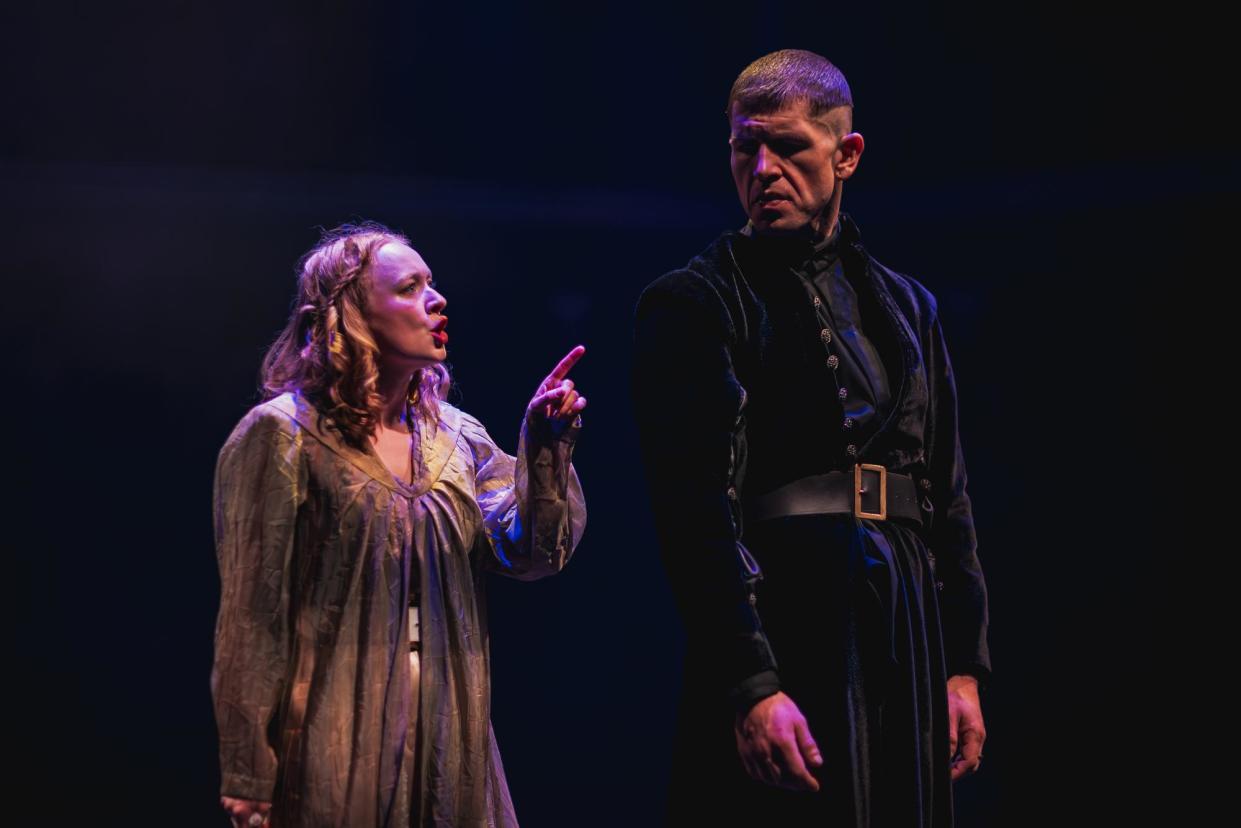Richard, My Richard review – like a medieval version of The Crown

From a hole in the stage, a voice bellows: “Where are my boots?” History (personified by Tom Kanji) is aghast at the sound. He is here, in a Leicester car park, to record the discovery of the body of a “hunchbacked” medieval king. Richard III (Kyle Rowe) rises from his grave, dazed but pugnacious. When History reveals to him that he is viewed today as the very type of a wicked villain, an appalled Richard demands they re-examine the record of his life. What follows is full of sound and fury (as if to echo History’s assertion that history, with a small “h”, is written by he who shouts loudest), confrontational dialogue punctuated by catch-line humour (Laura Smithers’s nakedly ambitious, although gorgeously gowned Margaret repeatedly insisting that her son is “one thirty-two-th” royal blood – he will defeat Richard to be crowned Henry VII).
Where Shakespeare used Richard to explore moral questions of good and evil, Philippa Gregory’s Richard, My Richard aims to align him more closely with “historical truth”. In the first half, over a staccato sequence of scenes, her straight-backed, Yorkshire-accented king denies killing his uncle; proclaims loyalty to his brother, Edward (Matt Concannon); shows his love for his wife, Anne (Tori Burgess); and is eager to discover from History the fate of the two young princes in the Tower. He would do better to ask Anne or Margaret.
As in her novels, the renowned writer of history and historical fiction gives pivotal roles to female characters, especially in the play’s second half, where the action opens up and allows more space for interaction (and audience engagement). All scheme as ruthlessly as the men, while the princes’ mother (Jennifer Matter) and sister (Mary Savage) also practise witchcraft against their enemies (echoes of Macbeth are intentional).
Katie Posner’s direction sends scenes flying across the in-the-round stage. The text doesn’t allow for nuanced interpretations, but performances are carried off with panache. Philip Gladwell’s sculpted lighting and Richard Kent’s stark, dark set evoke an atmosphere of courtly intrigue. Soundscapes by Beth Duke sometimes chime powerfully with shifting emotional tones, but are too often tiresome in their intrusive omnipresence.
A soliloquy by History, explaining why he records the lives of the two princes, but not of those children who are “bobbing in boats, targeted in bombings”, delivers the play’s most arresting moment. “If you don’t care,” he asks, “how can I?”
• Richard, My Richard is at Shakespeare North Playhouse until 30 March, then tranfers to the Theatre Royal Bury St Edmunds, 11–27 April


